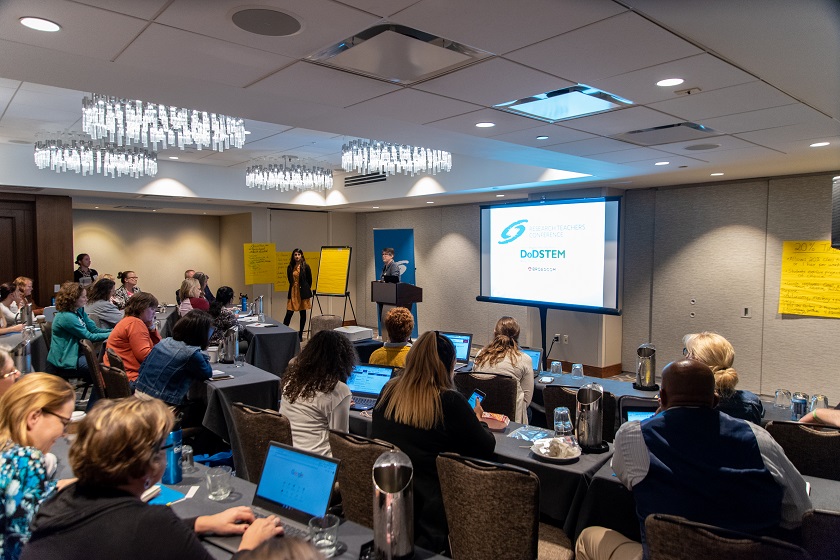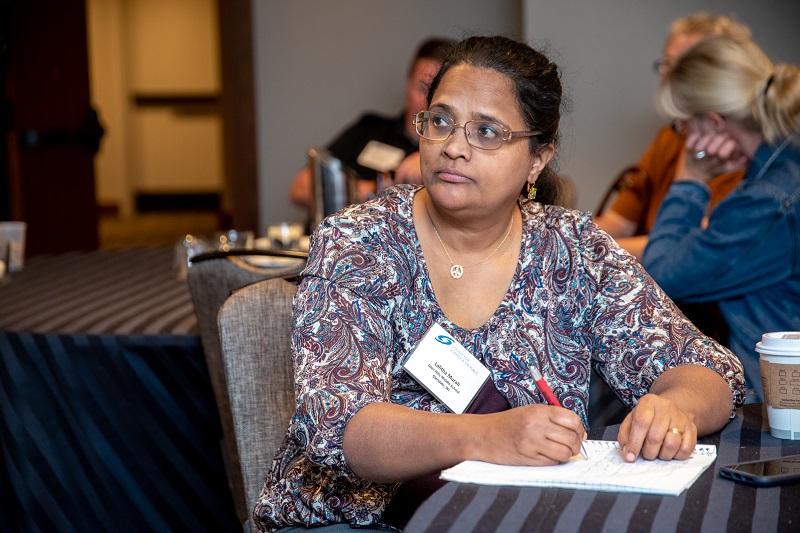Inspiring students with citizen science

The idea that science is not only a profession, but also a hobby was central to the “Turning Citizen Science Projects into Independent Science Fair Projects,” breakout session at the Society’s inaugural Middle School Research Teachers Conference. The session was led by Lalitha Murali, a teacher at Glen Hills Middle School in the greater Milwaukee, Wisconsin area and David Sewell, a teacher at W.E. Mitchell Middle School in Rancho Cordova, California. Drawing from the thought leadership of Caren Cooper, a strong advocate for citizen science, Lalitha and David discussed how citizen science projects can spark student interest in STEM fields.
So, what is “citizen science” and who are “citizen scientists”?
Citizen science projects provide non-scientists meaningful ways to contribute to scientific research. Likewise, citizen scientists are individuals who volunteer their time, efforts and resources toward research projects in collaboration with professional scientists or alone. They don’t have formal science backgrounds, but can still have an impact on important scientific inquiries. Participants in the breakout session shared examples of citizen science projects they’d been involved in, including:
- Investigating how wind turbines could interfere with bat migration patterns
- Counting mosquitoes in their backyards
- Playing computer games to help scientists learn more about retinal neurons
- Observing urban wildlife

David shared that he has always been a citizen scientist. For instance, when Intel began researching wireless electricity, the company invited the public to join in their efforts. David’s students got involved and took apart equipment, looking for areas of improvement. “I didn’t realize at the time it was a citizen science project. That was 10 years ago, back when wireless chargers were just starting to gain traction.”
“Students who want hands-on experiences outside the classroom can be citizen scientists,” David explained. Around the world, thousands of citizen science initiatives are giving members of the public an opportunity to collect and share data on issues they care about. “Citizen science can show students and kids they are scientists too,” Lalitha pointed out. “The idea is to get them interested in a topic enough to want to turn that into a science fair project,” David added.

Lalitha and David shared resources available to teachers interested in using citizen science as a way to engage their students in STEM. Websites like scistarter.org and citizenscience.gov have searchable databases of projects and events for students to pursue or attend. “Getting a middle school student to do a science project that wasn’t assigned to them, but rather something they picked, makes science exciting for kids. It’s theirs, something they can own and they’re excited about it,” Lalitha reflected.
Another teacher in the audience shared how her students conducted citizen science within their local community. They researched school crossing traffic and monitored how fast cars were going. Their results were later submitted to municipal district officials and radar signs were subsequently installed to improve public safety.
Demonstrated by Lalitha, David and attendees of their breakout session, citizen science projects have the potential to set students on a trajectory toward independent research projects and eventual STEM careers.


